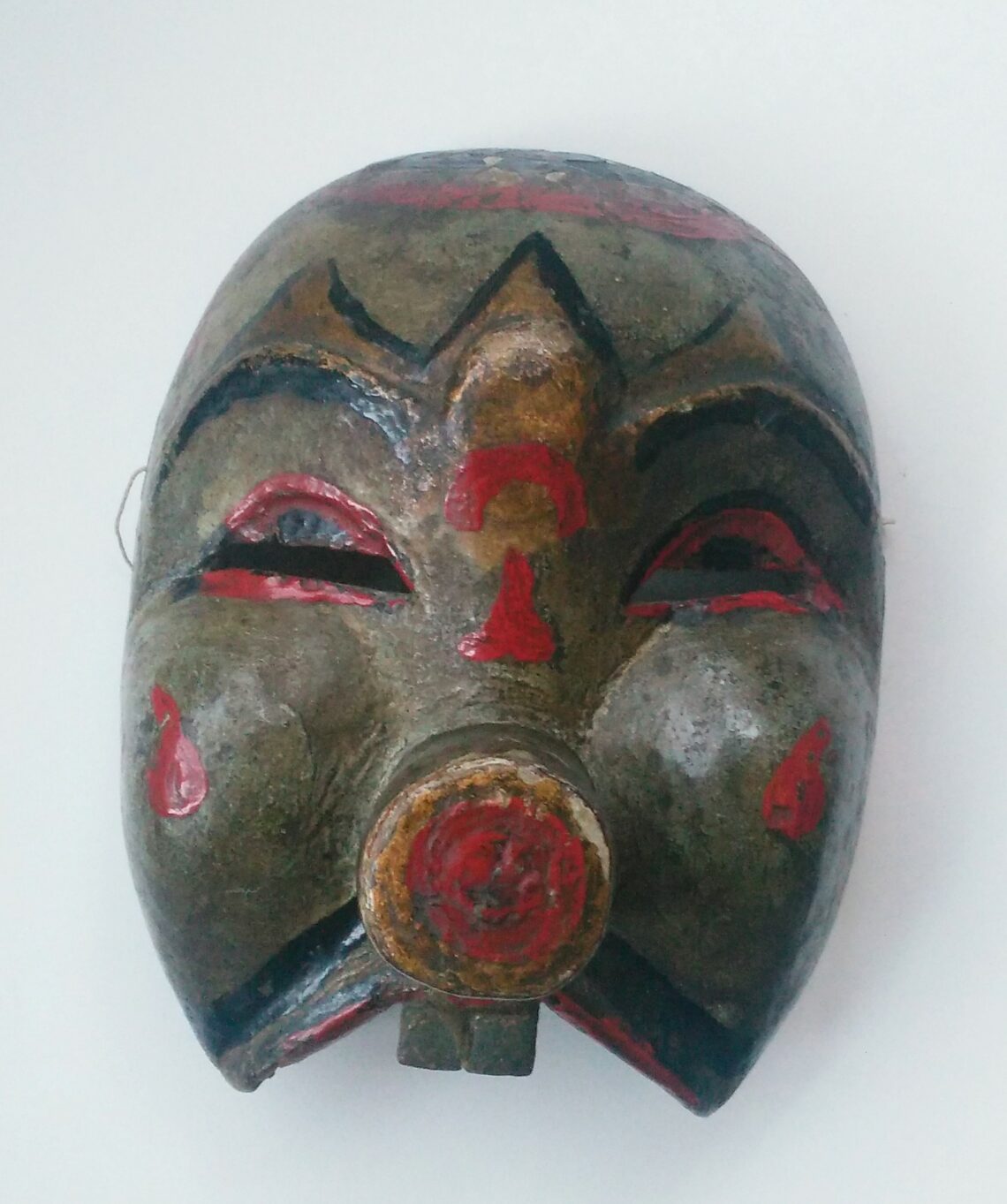 Q: Inherited from my parents, it was on the wall in their house as long as I can remember. Perhaps 1949. It is 13 x 16 x 8 cm and made of a single piece of wood. Kika, 1814 Q: Inherited from my parents, it was on the wall in their house as long as I can remember. Perhaps 1949. It is 13 x 16 x 8 cm and made of a single piece of wood. Kika, 1814
A: The complete performance involving the Pentul mask is a battle ceremony with at least two troupes battling in the village square. Pentul dances originate from pre-Hindu culture (before the sixth century AD) and survived in Java, throughout the Hindu Buddha period, the Islamic period, and Dutch colonialism. To this day Pentul trance dances are still performed to celebrate harvest thanksgivings, circumcisions, weddings, or even the Indonesian independence day. Because the Pentul dance has always been a peasant performance, and the fact that this mask is finely carved using a variety of tools, suggest that it was made in the times when villages were still relatively wealthy and independent from the state before WW II. This artifact has been used and is probably over 100 years old. You have a very collectable mask. A
 
|


 Authentic African Ekpo mask?
Authentic African Ekpo mask?
 Pende pumbu mask
Pende pumbu mask